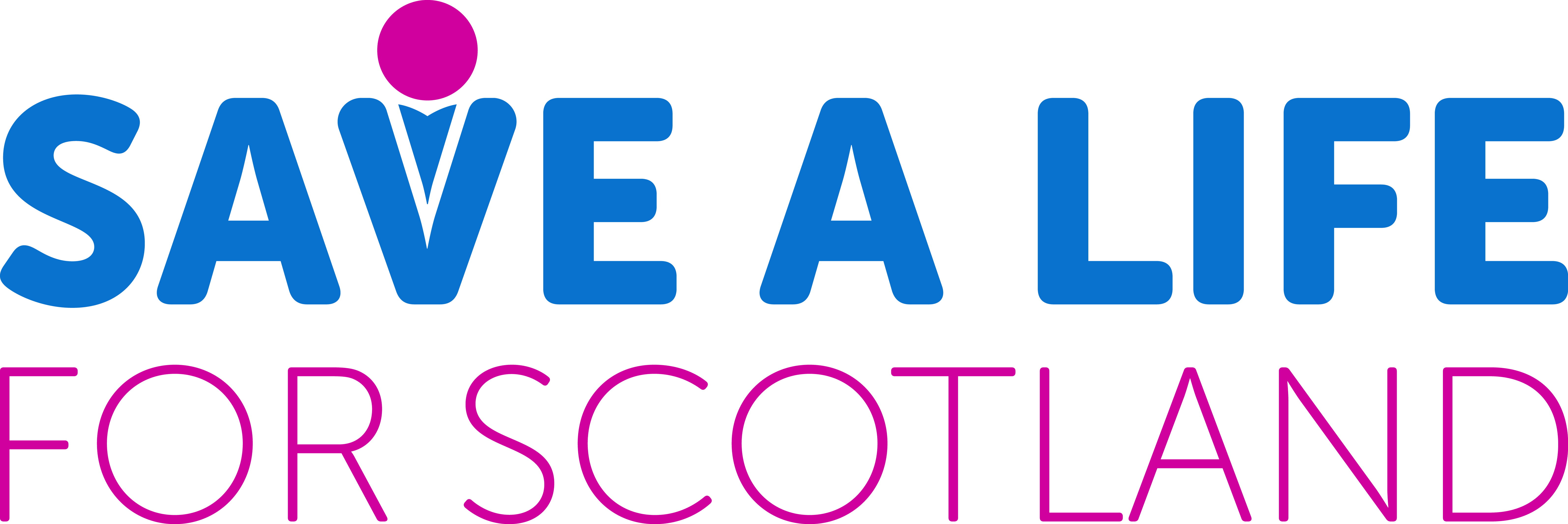You have the power in your hands to help save a life by starting CPR.
Many of you are ready and willing to jump into action if you witness someone in cardiac arrest but we also know that many others will feel hesitant and scared to get involved.
Welcome to Resus-O-Ween, throughout the month of October, we will address some of the most common fears about performing CPR with the hope that the information below will help alleviate some of your fears so you’re confident and CPR ready!
- CPR Fear #1: CPR During a Pandemic
- CPR Fear #2: Causing Harm
- CPR Fear #3: Performing CPR incorrectly
- CPR Fear #4: Performing CPR on a Woman
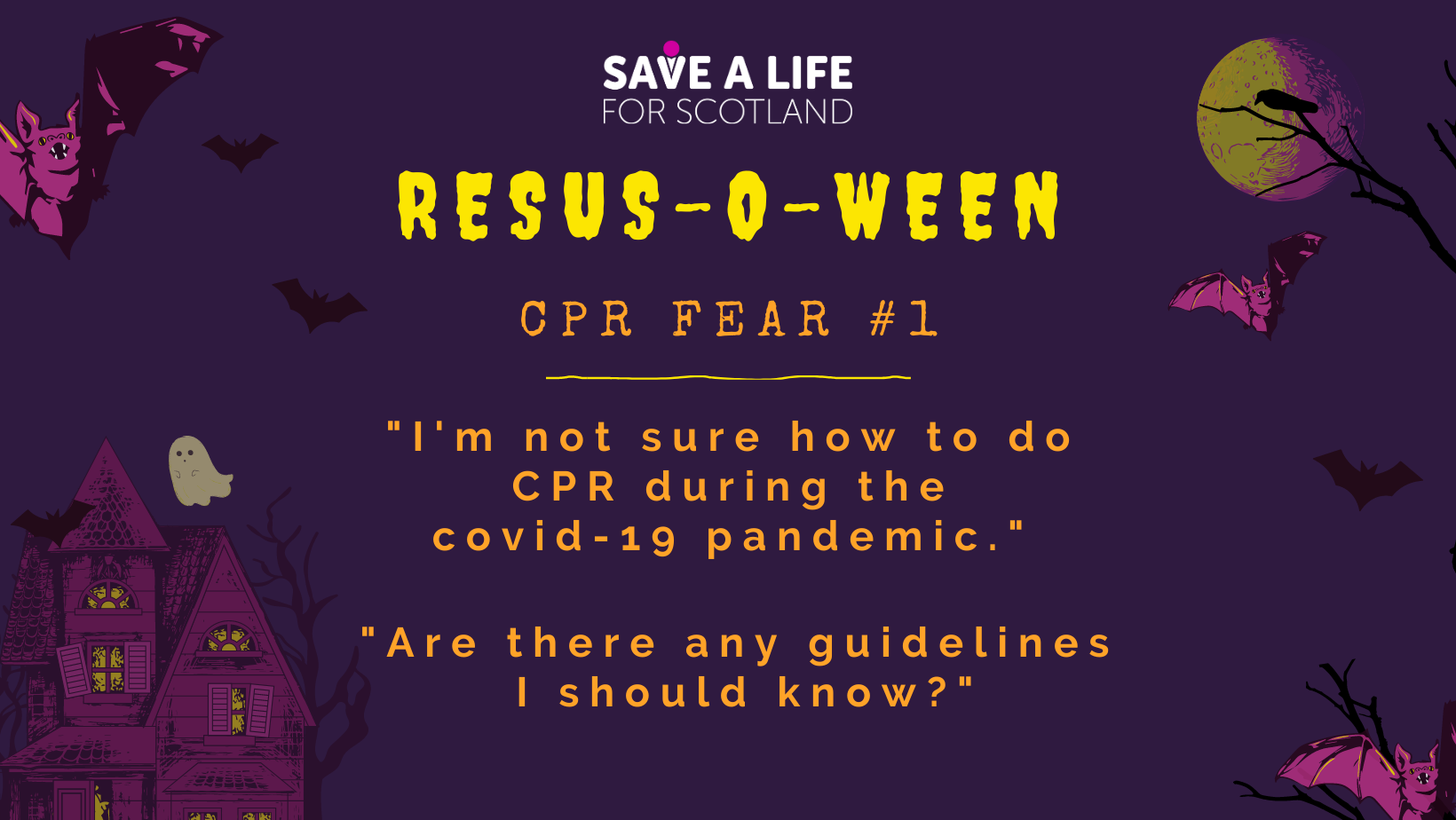
Out-of-hospital cardiac arrests don’t stop happening during a pandemic and CPR remains a crucial part of increasing chances of survival. With reports from different parts of the world saying that bystander CPR rates have decreased during the pandemic, it is essential that the public learn CPR and feel confident to use their lifesaving skills.
In light of the coronavirus (Covid-19) outbreak, the Resuscitation Council UK has amended their guidance on how to do CPR while there there is a risk of coronavirus. This means loosely placing a cloth over the mouth and nose of the collapsed person and doing chest compressions only.
Learn how to save a life with the amended CPR guidance advice on our resources page.
Different aspects of our lives have been affected by the pandemic but you know it’s funny, everything is different but everything is also still the same. You still speak to your granny but you chat to her on Zoom. You still go to the shops but everyone’s in a mask. We’ve all continually adapted to the ever-changing circumstances and CPR is no different. The guidance for CPR has been amended slightly but what remains the same is that we have the power to help save a life. Bystander CPR is crucial to improving chances of survival.
The general assumption is that if you are going to use CPR, it will be to help a stranger, but the truth is you are much more likely to need it for a loved one as research shows that the most cardiac arrests actually happen in the home. As we spend more time in our individual households, it becomes even more important to be prepared so you can help save the life of a loved one. We recommend developing a CPR action plan and having discussions with the whole household.
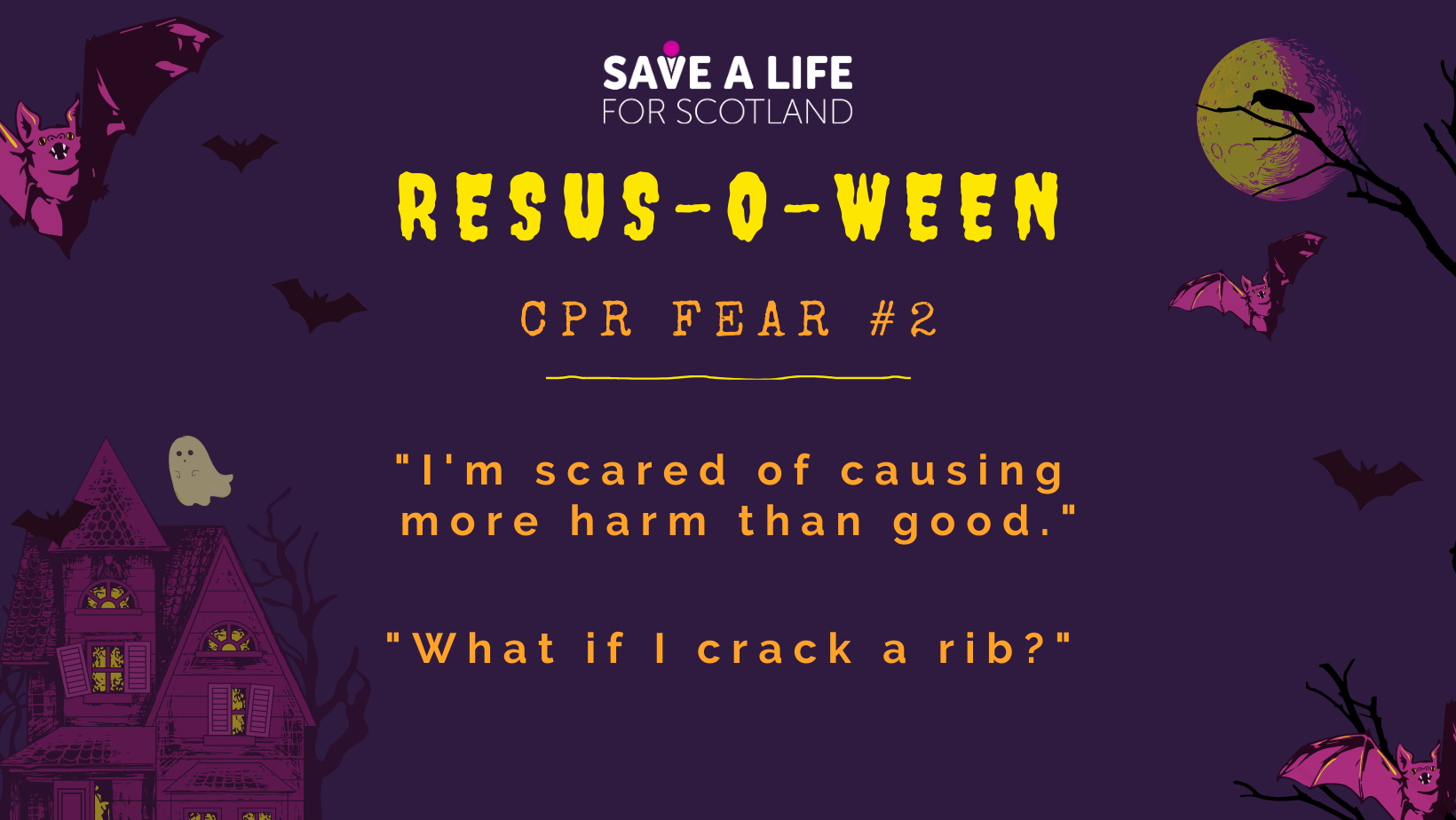
One of the most common fears that keep people from performing CPR is the fear of causing more harm than good. You might have also heard that doing CPR can sometimes lead to a cracked rib or some other injury to the patient.
Chest compressions need to be hard and fast in the centre of the chest. For adults in cardiac arrest, you should be pressing down on the chest between 5 – 6 cm. Effective chest compressions can lead to a broken rib or some other injury but it’s important to remember that bones can heal over time whereas death from cardiac arrest is irreversible.
Every second truly counts as starting CPR can double or triple an adult’s chances of survival. During cardiac arrest, the heart stops working properly and can no longer pump blood to the rest of the body including the brain.
You have the power to help save a life. Don’t be afraid that you’ll cause more harm to the patient. By jumping into action and starting CPR, you’re giving that person their best chance of survival.
We think it’s also important to acknowledge that survival rates for out-of-hospital cardiac arrest are low. It can be devastating to later find out that the individual didn’t survive after you gave it your all to help save their life. If this ever happens to you, we want you to remember that a negative outcome is not your fault. Thank you for stepping in and trying your best.
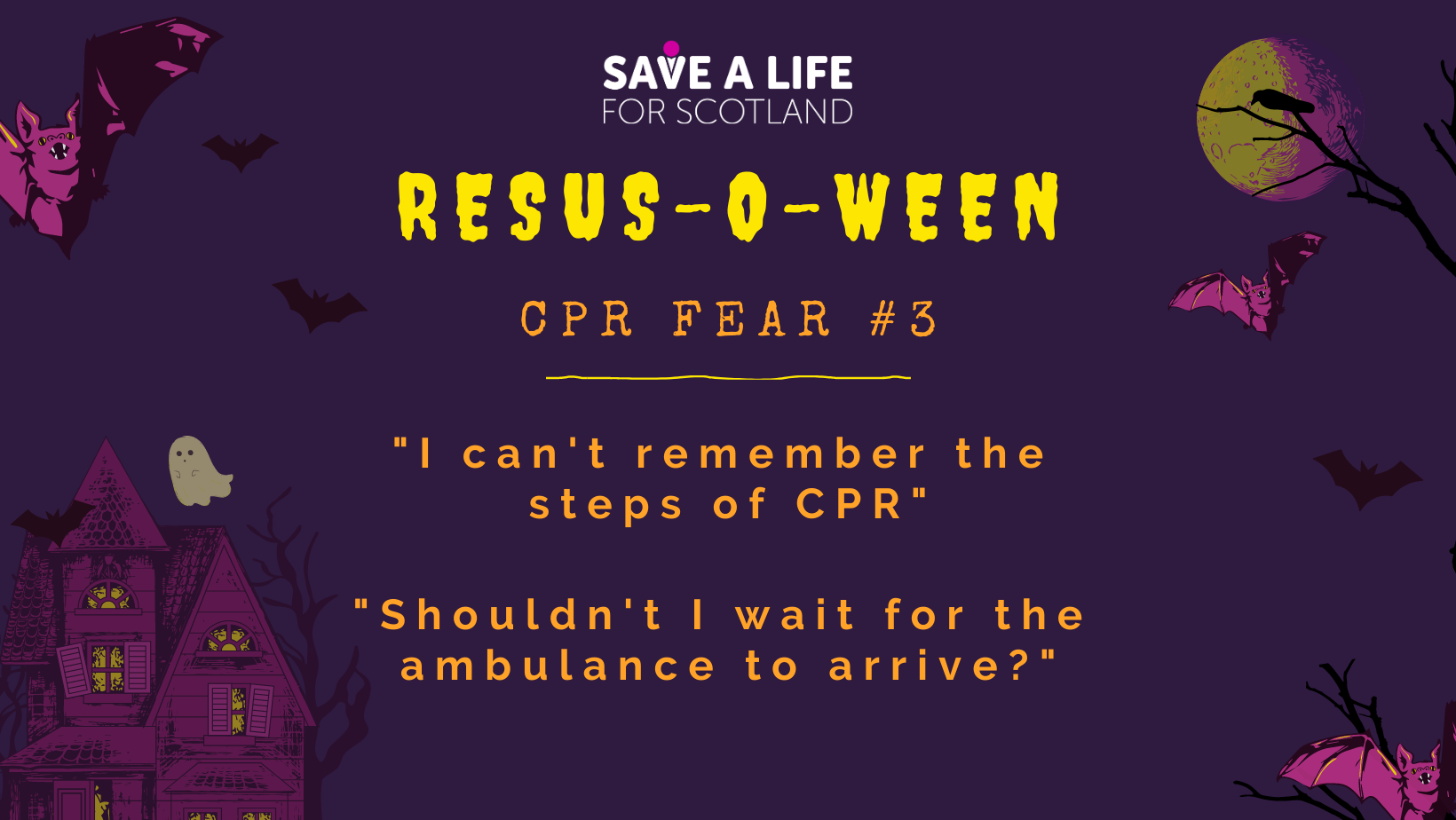
Research has shown us that more than half of adults in Scotland have attended some type of CPR training in their lives (Scottish Health Survey 2019). Although the majority of people have had some training in the past, many still do not feel confident in their CPR abilities.
Perhaps you took a formal CPR course over 2 years ago, or you’ve watched an online video about CPR a while back and your memories about how to do CPR are a bit hazy. Maybe you’re thinking that CPR is something you should leave to the professionals. Let’s talk this through and address some of these points.
As with any other life-threatening medical emergencies, the most important step to remember is to call 999. The 999 call handler will be with you every step of the way until the ambulance arrives. They will explain how to do CPR and count the beats of chest compressions with you. So don’t worry if you can’t remember the exact steps of CPR or how often to press down, your 999 call handler will talk you through it.
Cardiac arrest is a life-threatening and time-sensitive emergency as the heart has stopped beating and no blood is flowing to the brain and other vital organs. Without CPR, the chances of that person surviving drops by 10% with every minute that passes. The patient cannot wait for the ambulance to arrive and it is crucial for any bystanders to start and continue CPR until the ambulance arrives.
Need a refresher on how to perform CPR?
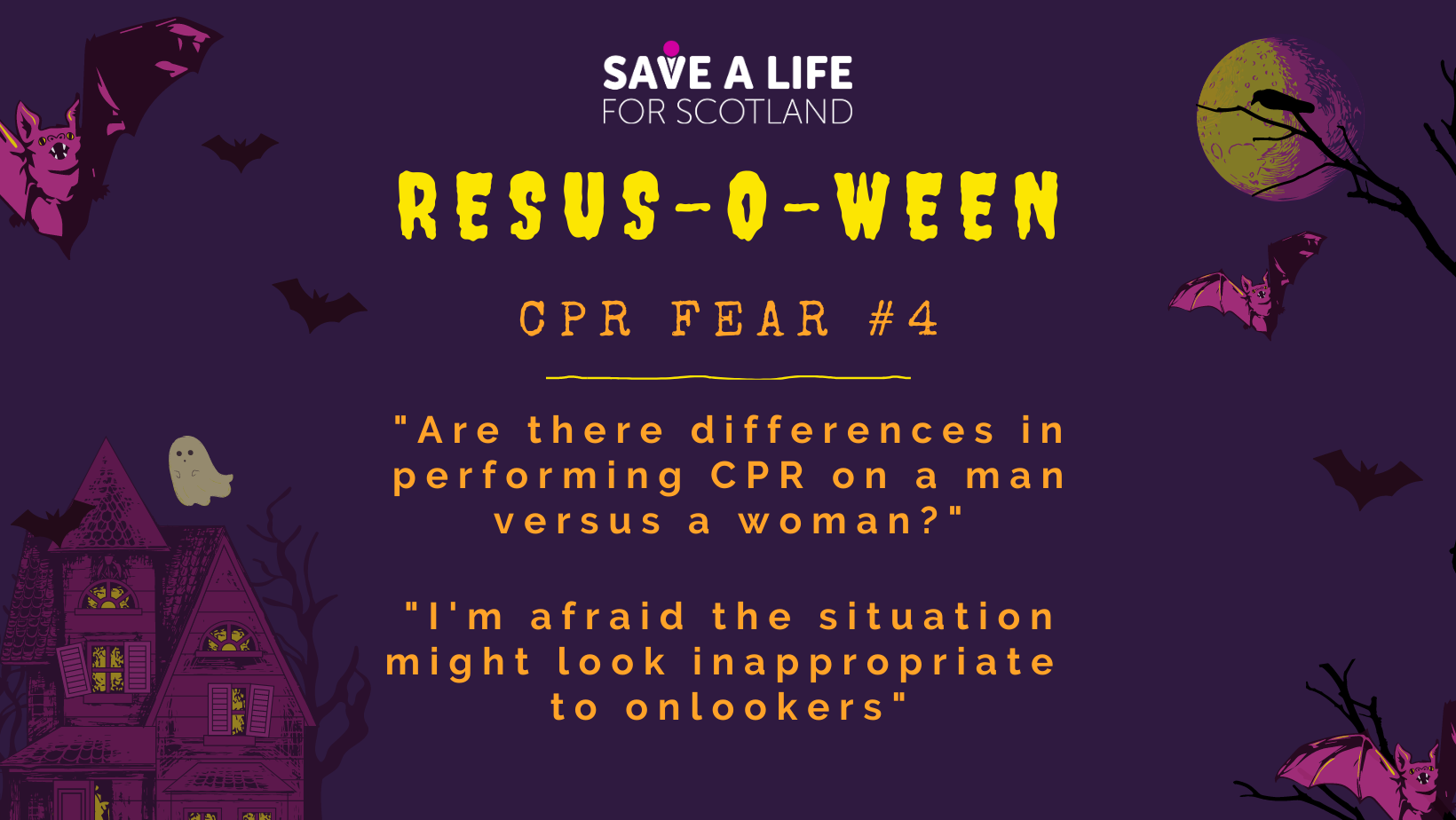
In Scotland, women make up 36% of all out-of-hospital cardiac arrests. This amounts to about 1,200 women per year.
Studies have shown that across the board, women are less likely than men to receive CPR when in cardiac arrest. Reasons include psycho-social factors such as fear of being accused of sexual assault and perceived “female frailty” which can make bystanders hesitant to step in or even recognise a cardiac arrest in women.
In addition, women are also less likely to have a defibrillator used on them by a bystander than men due to fears related to exposure of the chest to place the defibrillator pads on.
These fears and uncertainties about performing CPR on women have real life consequences with survival rates of women lagging behind men. A change is needed in attitudes and culture around cardiac arrest in women to close this gender health gap. Do not be afraid to give CPR to a woman. Having breasts should not stand in the way of a person getting the help they need.
Let’s clear up any misconceptions once and for all: CPR is a gender neutral life-saving technique. Properly administering CPR involves pushing hard and fast in the centre of the patient’s chest, regardless of whether that patient has breasts. To read more about the research around women and CPR, please see our information sheet here.
Let’s kill the stigma that’s killing women and #GiveHerCPR.
